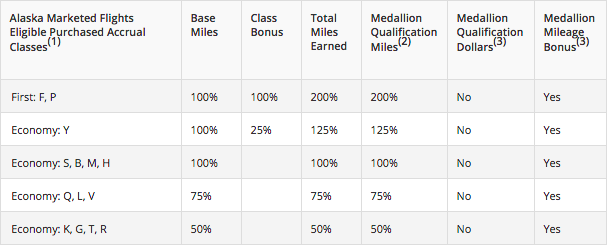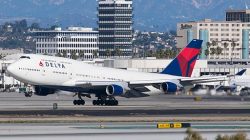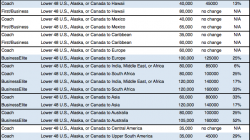Last year Alaska Airlines Mileage Plan announced its intention to award fewer miles when its members credit Delta-operated flights. Now Delta is doing the same when its SkyMiles members credit Alaska-operated flights.
I’m not entirely sure why Delta made this change, except that it may signal a further breakdown in their partnership. They’ve previously announced changes to their reciprocal elite benefits that cut some benefits like a free checked bag.
Alaska’s decision made sense. Delta now links award miles in its own SkyMiles program directly to the fare paid, while Alaska still uses a distance-based scheme. To compensate, Alaska stopped offering 100% of the distance flown for most flights and now offers between 25% and 200% based on fare class. Though I have no knowledge of the money that changes hands through this arrangement, I would imagine it’s helpful if both programs offer similar miles for the same Delta-operated flight.
But Delta’s move affects Alaska-operated flights, yet Alaska increased the number of miles it offers at the time of its earlier announcement. So now for an Alaska-operated flight, you can choose between more miles by crediting to Mileage Plan, or many fewer miles if you credit to SkyMiles.
Beginning earlier this year, many economy class fares would earn only 50 or 75% of the distance flown for award miles and elite qualifying miles. You would have to book an S, B, M, or H fare — fares that earn you an instant upgrade at the time of booking if you were an Alaska elite member — just to earn 100% of the distance flown. Partway through they’ve made another change for travel beginning April 1. Those low rates are still in effect, and now the opportunity to earn Medallion Qualifying Miles and elite bonus award miles on Alaska-operated flights have been stripped away, even when Delta tickets them.
It’s a big fall. SkyMiles groups partners into four groups, and it moved Alaska Airlines from Group 1 to Group 4. The nomenclature is apt. This is like being the last group to board, when there are only middle seats and no overhead space. Roughly speaking, here are how they compare:
Group 1: Full credit for elite qualifying miles (MQMs), credit for qualifying dollars, bonus award miles for status, and bonus award miles for fare class.
Group 2: Reduced credit for elite qualifying miles, credit for qualifying dollars, bonus award miles for status, and a smaller bonus for fare class.
Group 3: Reduced credit for elite qualifying miles, credit for qualifying dollars, bonus award miles for status only if it’s ticketed by Delta, and an even smaller bonus for fare class.
Group 4: Varies by carrier, but generally reduced credit for elite qualifying miles, no credit for qualifying dollars, no bonuses for elite status, and few bonuses for fare class. This is where Delta assigns Korean Air, a SkyTeam alliance member (though you wouldn’t recognize it from the earning chart). Alaska is now stuck here, as well.
So these are dark days for Alaska passengers who choose to credit to Delta. I don’t doubt the program works well if you’re a business traveler on premium fares, or if you’re a Delta hub captive with no alternative. But if you have a choice of carrier, especially if that choice is between Delta and Alaska in one of the West Coast markets where they have healthy competition, I’d be very careful about mixing loyalties. Make sure you can satisfy your travel needs with only one or the other. One of the many benefits of partnerships — crediting miles from multiple carriers to accrue status and free travel faster — is rapidly eroding.






